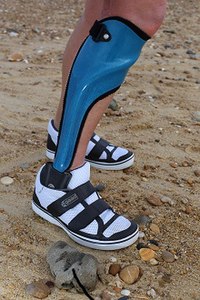
Photo from wikipedia
BACKGROUND The effects of trunk stabilization exercise programs and exercises applying weight loads for stroke patients are well presented. However, there is not enough objective research to prove the effects… Click to show full abstract
BACKGROUND The effects of trunk stabilization exercise programs and exercises applying weight loads for stroke patients are well presented. However, there is not enough objective research to prove the effects of trunk stabilization exercise programs using weight loads for stroke patients. OBJECTIVE In this study, a trunk stabilization exercise program using weight loads was performed to investigate its impact on the balance and gait ability of stroke patients. METHODS Thirty patients with stroke were randomly divided into three groups. Experiment group 1 followed a trunk stabilization exercise program using weight loads, experiment group 2 followed a trunk stabilization exercise program, and the control group followed general physiotherapy. Patients' balance ability was assessed using balance measurement equipment BT-4 (postural sway area (PSA), postural sway length (PSL), limit of stability (LOS)), Berg Balance Scale (BBS), and Time Up and Go test (TUG). Gait speed was measured to examine gait ability. RESULT After the intervention, the PSA, PFSL in experimental groups 1 and 2 decreased but that of the control group increased. BBS, TUG, and LOS scores of experimental group 1 were significantly improved compared to experimental group 2 and the control group. Also, gait speed was significantly improved in experimental group 1 compared to experimental group 2 and the control group. CONCULSION This study may be used as a basic material for an effective trunk stabilization exercise method for stroke patients and might be of significance as an intervention method for stroke patients requiring long-term treatment.
Journal Title: NeuroRehabilitation
Year Published: 2022
Link to full text (if available)
Share on Social Media: Sign Up to like & get
recommendations!